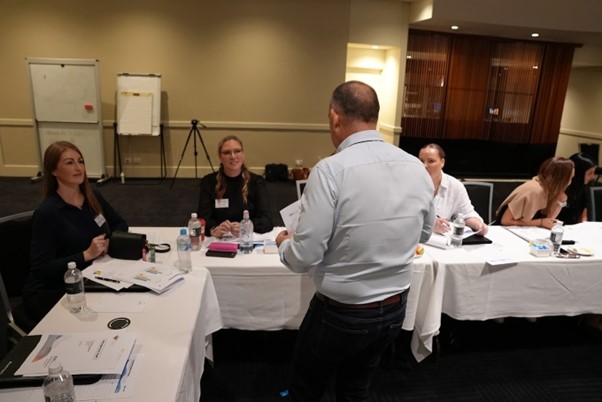I’m asked all the time about ego and negotiation and in a response to a delegate yesterday I said: “It seems you’re suggesting that having a strong ego or displaying an overly dominant attitude might not be effective in negotiation situations. In many cases, you’re right. Negotiation is a complex interpersonal process that often requires collaboration, active listening, and empathy.” – Garret Norris, CEO of the KONA Group
The Key Elements of Effective Negotiation
A successful negotiation involves several key elements that contribute to achieving a mutually satisfactory agreement between parties. Whether you’re negotiating a business deal, a contract, a salary, or any other arrangement, let us guide you through the elements that can greatly enhance your chances of success.
Preparation
Thoroughly research and understand your own needs, goals, and priorities, as well as those of the other party.
Anticipate potential objections, concessions, and alternative solutions.
Knowledge is a powerful tool in negotiation.
Clear Objectives
Clearly define your objectives and desired outcomes for the negotiation.
Having a well-defined goal helps you stay focused and avoid unnecessary concessions.

Active Listening
An effective yet simple tactic when negotiating is to pay close attention to what the other party is saying.
Listen actively to their concerns, needs, and interests.
This helps build rapport and understanding, enabling you to find common ground.

Effective Communication
Clearly and persuasively convey your own points while acknowledging the other party’s perspective. Use concise and respectful language, and be open to asking clarifying questions.
Flexibility and Adaptability
Be prepared to adjust your approach and consider alternative solutions.
A willingness to compromise and find creative options can help break impasses.
Patience and Timing
Negotiations can take time. It’s important to stay patient and avoid rushing the process. Allow both parties to express themselves fully before moving forward.
Emotional Intelligence
Manage your emotions and be aware of the emotions of the other party.
Emotions can impact decision-making, so maintaining a calm and empathetic demeanor is crucial.
Building Relationships
Establish a positive rapport with the other party. A good working relationship can lead to more productive negotiations and future collaborations.
Trust and Credibility
Demonstrate honesty and integrity throughout the negotiation. Building trust enhances cooperation and reduces the likelihood of disputes later on.

Win-Win Mindset
Remember to aim for a solution that benefits both parties. The goal is to find common ground where both sides feel they’ve gained value.
Concessions
Be strategic in making concessions. Don’t give away too much too soon, and ensure that any concessions are reciprocated.
The Importance of BATNA

BATNA (Best Alternative to a Negotiated Agreement):
Understand your BATNA and the other party’s BATNA. This is your fallback plan if the negotiation doesn’t result in an agreement. Knowing your BATNA gives you leverage.
Non-Verbal Communication
Pay attention to body language, tone of voice, and other non-verbal cues. These can provide insights into the other party’s thoughts and feelings.

Documentation
Clearly outline the terms of the agreement in writing to avoid misunderstandings later on. Both parties should have a clear understanding of their commitments.
Professionalism
Maintain a professional attitude and demeanor throughout the negotiation process. Respectful behaviour fosters a more productive atmosphere.
Timing and Deadlines
Use timing strategically. Introduce deadlines to encourage decisions and avoid unnecessary delays.
Mediation or Third Party
If negotiations reach a “deadlock”, consider involving a neutral third party or mediator to facilitate discussions and find common ground.
Remember, negotiation is a dynamic and complex process. The successful application of these elements can vary depending on the specific situation and the parties involved. Flexibility and adaptability are key in tailoring your approach to each negotiation.
Contact KONA for tailored Negotiation Training, or see what else we have to offer!
Sales Training – Some call it an ‘unfair advantage’. To us, it’s simply learning to love sales and your customers again.
Call Centre Training – focuses on the delivery of customer service excellence first and foremost.
Sales Pipeline – helps sales leaders to develop a customised funnel process for their organisation.
Power Hour – delivers immediate ROI by teaching your sales team the disciplines and skills to turn calls into sales and hot prospects.
Customer Service Training – the key to every organisation’s commercial success, and the glue that holds it all together.
And so much more.


















































































































